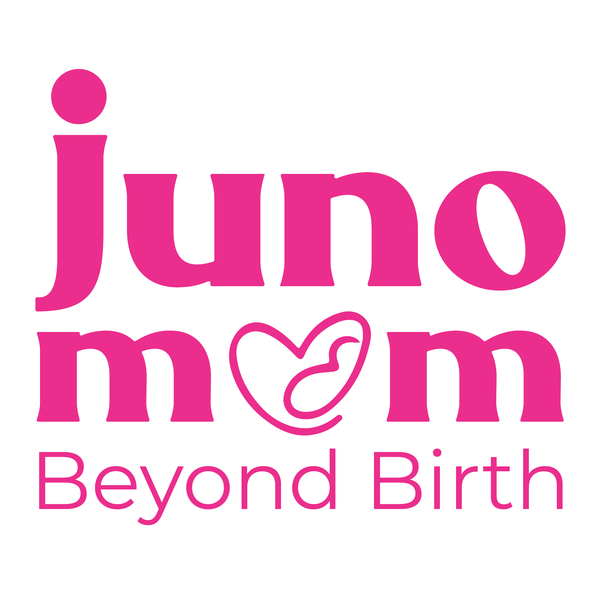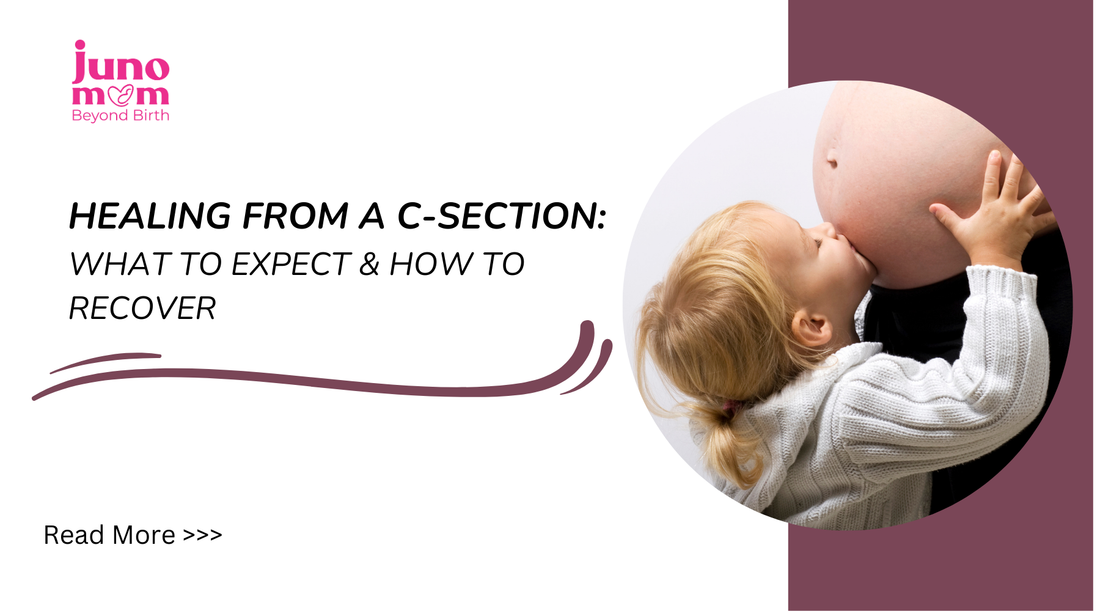All the to-be moms are concerned about their delivery and what if anything goes wrong, what if the delivery turns into a caesarean?
Usually women get frightened of caesarean surgery and undeniably it is daunting and painful but we must know it is very normal. The modern medical practices have advanced technologically and it has totally become possible to have C-section deliveries with least complications.
Every birth experience is unique, every mom goes through different emotions and physical transformation, and to make every new mom’s experience more comfortable, Juno Mom is here.
What Happens During C-Section?
Let’s not just panic, first we must know what actually happens during C-section. There are so many things people say but we must believe what doctors say and the real facts.
The C-section, or a caesarean, is a surgical procedure used to deliver a baby through an incision made horizontally in the mother's abdomen and uterus. This type of surgery is often performed when vaginal delivery poses risks to the mother or baby. It can also be avoided if the mother takes the advised care during the pregnancy. In some cases, c-section is the only option which is totally based on the person’s physical condition and must not be feared. 
In comparison to vaginal delivery, c-section causes a slow-recovery time and demands extra care as well. You must know some quick post c-section recovery tips:
- The first few days just after surgery must be focused on managing rest and pain. Any kind of movement must be minimal.
- Avoid putting any stress around incision areas.
- Around 2nd-4th week, gradually resume light activities like slow walks around the house.
- Pay close attention to incisions, pain and swellings.
- Even after the 5th week, avoid any heavy lifts but you can slowly and steadily start resuming normal activities.
Every woman’s body is different, some may recover faster yet others may need extra time to get back to their normal lifestyle. The key to fast recovery is listening to your body and not rushing the process. It’s better to take it slow than inviting any other complications.
What To Expect After C-Section?

As we keep reminding, every woman’s body is different, so are their experiences. Everyone goes through varied symptoms post surgery. Let us list down some common symptoms for you to stay prepared:
- Mild soreness and swelling is common around the incision area, which reduces gradually over a few weeks.
-
Post surgery, you may experience vaginal bleeding for up to 4-6 weeks which gradually get lighter in colour and volume. Use the postpartum maternity pads and underwear to help through this difficult time.
-
Movements like sitting, standing, bending, and lifting can be comparatively painful. Avoid any sudden movements, take help from others, and use body supporters like abdominal binders to ease it.
- You must have heard about “baby blues”. It is normal to feel overwhelmed as the body goes through hormonal changes during this period. Up to 80% of mothers feel these emotional changes.
Red Flags To Watch Out During Postpartum Care
While some discomfort is common, certain symptoms must not be avoided and taken into quick consideration:
- High Fever Over 100.4°F or 38°C
- Severe Abdominal Pain
- Heavy Bleeding or Passage of Large Clots
- Signs of Infection at the Incision Area
- Shortness of Breath or Chest Pain
These issues require immediate medical care and must be dealt with at the earliest.
How To Recover After C-Section?
-
Take it Slow & Prioritize Rest
Rest is the key during the first few weeks of recovery. Since your body has undergone a major surgery, avoid any stressful activities. Take this time to heal and bond with your baby. Keep your everyday essentials handy, which must be a proper postpartum kit.
-
Focus on Light Movements
Avoid any sudden movements that can cause distress to the body. While sitting and standing, rely more on your legs instead of your torso. Use a pillow against your abdomen or an abdominal binder for extra support while coughing or sneezing.

-
Manage Pain Naturally
Only take medications prescribed by the doctor and consult before trying anything new. Warm compressors can help alleviate pain around the incision area. You can also try natural remedies for reducing inflammation.
-
Stay Hydrated and Eat Nutritious Food
A balanced diet rich in iron (to replenish blood loss), protein (for tissue repair), and fiber (to prevent constipation) is essential. Staying hydrated is crucial to regulate body functions and promote better healing.
-
Take Your Personal Time
It’s common to go through emotional ups and downs. Reach out to your friends and family, prioritize your mental health and surround yourself with the vibes as you like them. Physical health is one part of recovery but emotional well-being is also highly necessary.
The recovery journey may feel slow and monotonous but it is the most essential time for your body to avoid any future pains and discomfort. During the older times, women did not have much leisure and knowledge, so they took minimal rest and got back to their normal activities. After all these years, their body has to go through stress and pain which could have been easily avoided.



